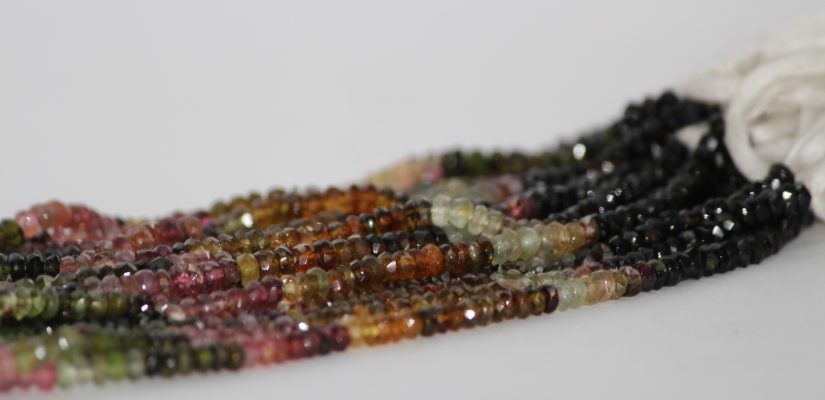
All about Tourmaline!
Tourmaline is the most colorful of all gemstones. It occurs in all colors, but pink, red, green, blue and multicolored are its most well-known gem colors. Scientifically, tourmaline is not a single mineral, but a group of minerals related in their physical and chemical properties. The mineral Elbaite is the member of the Tourmaline group that is responsible for almost all the gem varieties. Three other members of the group – Schorl, Dravite and Liddicoatite, are seldom used as gemstones.
Though Elbaite occurs in all color forms, the term Elbaite in the gemstone trade is sometimes used to describe the green form of Tourmaline. The other color forms of Elbaite have their own variety names on the gem market. Traditional Tourmaline gemstone variety names include Rubellite, the red or pink variety, Indicolite, the blue variety, and Watermelon Tourmaline, a multicolored Tourmaline of green and red. More recently coined Tourmaline variety names include Chrome Tourmaline and Paraiba Tourmaline. A recent trend in the gem market is to prefix Tourmaline gemstones by the color designation as opposed to variety name, such that “Rubellite” is now more often called “Red Tourmaline”.
The value of Tourmaline has a very large range. The more common forms can be fairly inexpensive, but the rarer and more exotic colors can command very high prices. Multicolored stones are truly a gemological wonder, as their beauty and uniqueness are unparalleled. An interesting form of multicolored tourmaline, adequately called Watermelon Tourmaline, has a red center surrounded by a green outer layer (or vice versa). When used as a gem, Watermelon Tourmaline is green on one side and red on the other. Schorl, a common black Tourmaline, is fairly inexpensive.
All colored Tourmaline gems display pleochroism, meaning their color changes when viewed at different angles. In some Tourmaline gems, this effect is hardly noticeable, while in others it is strongly apparent. Gemstone cutters must take this into account when cutting a Tourmaline, so that the finished gem brings out its best color.
USES
Tourmaline of all colors are faceted into gems for jewelry, but the red, green, blue, and multicolored stones, especially watermelon, are the most popular. Tourmaline can be found in fairly large transparent crystals, and these can produce very large exquisite and flawless gemstones. Tourmaline is used as a large pendant stone, in bracelets, rings, and earrings. Lesser quality stones are cut into cabochons, and are also polished into beads and used in bracelets and necklaces. Pink and green Tourmalines from certain localities contain tiny, parallel inclusions, causing them to display a strong cat’s eye effect when polished. Such stones are often cut as cabochons and called “Cats’ Eye Tourmaline” . Some pink, green, and multicolored Tourmalines are also carved into ornamental figures and carvings.
SOURCES
Important deposits of Tourmaline are in Afghanistan, Pakistan, Russia, Burma (Myanmar), Sri Lanka (Ceylon), and the United States (California and Maine). Several African countries have recently become big producers of gem Tourmaline, specifically Madagascar, Namibia, Mozambique, Tanzania, Nigeria, and Malawi.
Purchase at the Jewel Creation.
Recent Comments